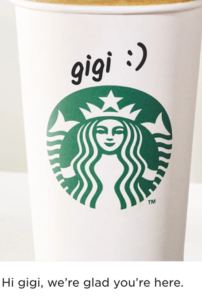Now that data-driven decision making has become the norm in marketing, it’s shocking when a brand misses the mark so badly. As the Twitter-sphere implodes, everyone is wondering ‘What happened? Why didn’t they test with customers?’ Most brands do rely on some form of testing before launching an advertising campaign…and the ones that don’t pay the price.
But what about brand strategy? Is testing necessary before deploying a brand positioning? The answer isn’t one that data-driven organizations like to hear: it depends.
For some brand teams, it’s absolutely necessary to pause and gather external feedback before transitioning from positioning strategy to creative. With others, it’s better to wait until campaign creative is developed to engage in customer testing.
Before evaluating the pros and cons of testing, it’s important to consider what testing will and will not achieve so that you’re making an informed decision about whether or not to allocate budget and resources to the endeavor.
Clarifying the Role of Positioning Testing
Positioning is not copy. Positioning is not an externally-facing language. So, testing should not be about wordsmithing and linguistics. It should be about validating a concept. Ensuring it rings true and motivates your target audience.
Positioning isn’t everything about your brand. Positioning is a concise statement that expresses the most differentiated and relevant aspect of what your brand stands for and why it matters. It isn’t designed to encompass every brand attribute, value or differentiator. Testing needs to be evaluated through the lens of what the positioning is, not what it isn’t.
Quality over quantity. Although quantitative research is often thought of as the gold standard for measuring customer sentiment, positioning testing is more informative with qualitative research: in-depth, high-quality conversations. But some organizations are looking for hard numbers and qualitative data may not be valued.
Testing Benefits
For organizations that are data-driven, testing may be a necessary hurdle to create leadership buy-in around a new brand positioning. Testing can be particularly helpful if it’s used to gather validation data points that will move a leadership group or board forward.
It’s also a great opportunity to connect with existing customers and show that you value their input. Because existing customers are already sold on your brand, testing will help identify whether the new positioning comes across as authentic and believable compared with the brand they already know and love. Customers are also likely to be aware of competitive options and will be a good sounding board to ensure the positioning is differentiated.
And, while they won’t be asked to examine specific language, most people can’t help themselves. Although you should take feedback on semantics with a grain of salt, you will gain insights on the type of language they are attracted to or repelled by, which you can then consider when it’s time to translate the positioning into external copy.
Testing Risks
The biggest concern with testing is that gathering impartial feedback (and not just validation) can become expensive and time-consuming depending on the scale of the research. Sourcing participants who aren’t existing customers may require incentives and an external research partner for recruitment. But, if you just stick with existing customers, you’re likely speaking to your brand evangelists who are inherently biased. Sticking with existing customers means you’ll miss out on learning whether the positioning sets your brand up for growth.
Finally, positioning is conceptual and it’s hard to get definitive results. It’s no guarantee that your customers are conceptual thinkers. Most people respond with neutral feedback, which doesn’t really help you understand if you’ve got a winner or not.
There’s no wrong answer
While it may strain your timeline and budget, deployed under the right circumstances, testing can make your positioning stronger or more credible. As you progress along the brand strategy journey and into creative development and eventually execution, there are many opportunities for testing. Ensuring that you allocate the resources at the right points should be a collaborative process with your strategic partners from day one of your engagement.
Emotive Brand is a brand strategy and design agency in Oakland, California.














